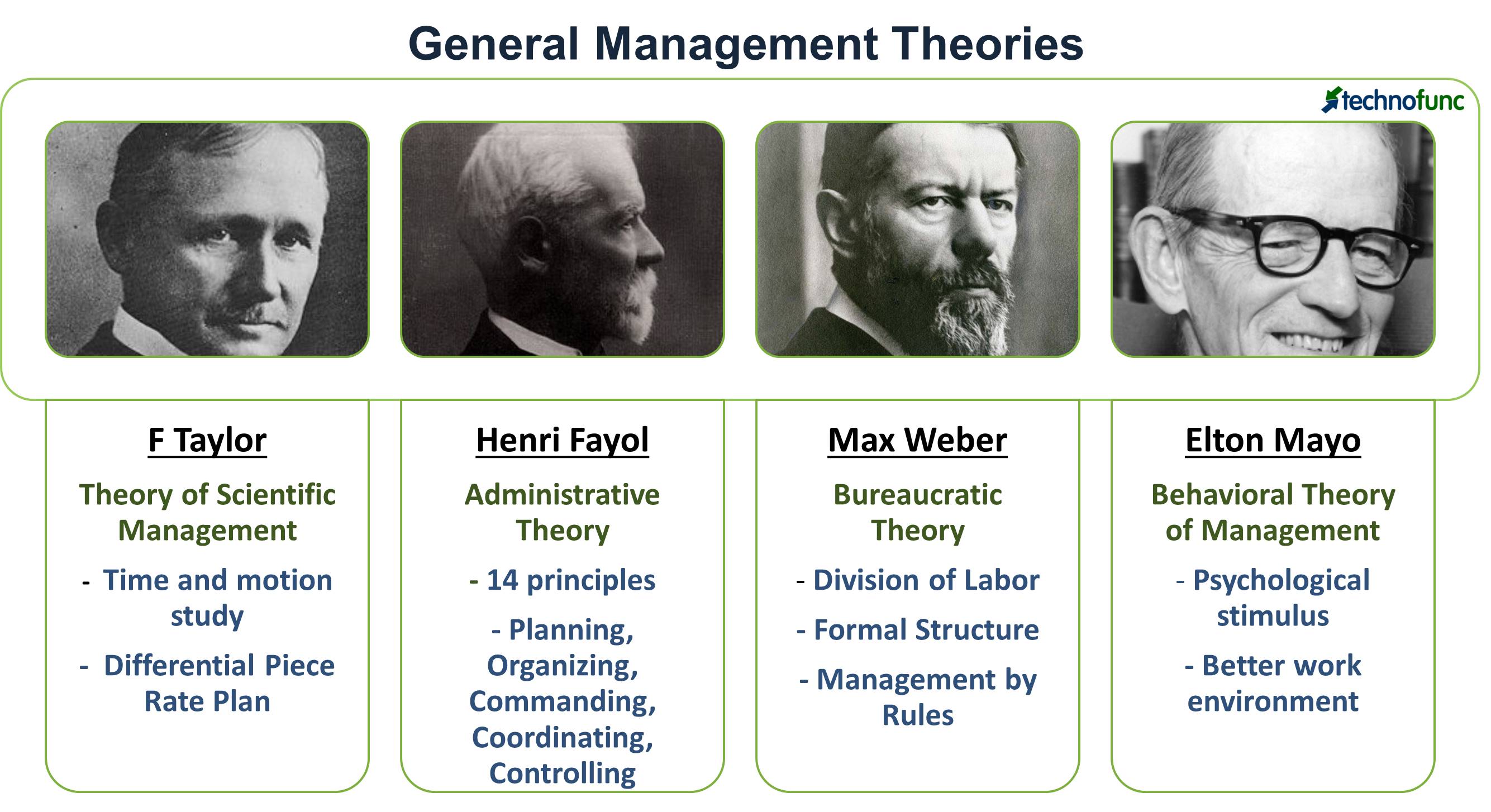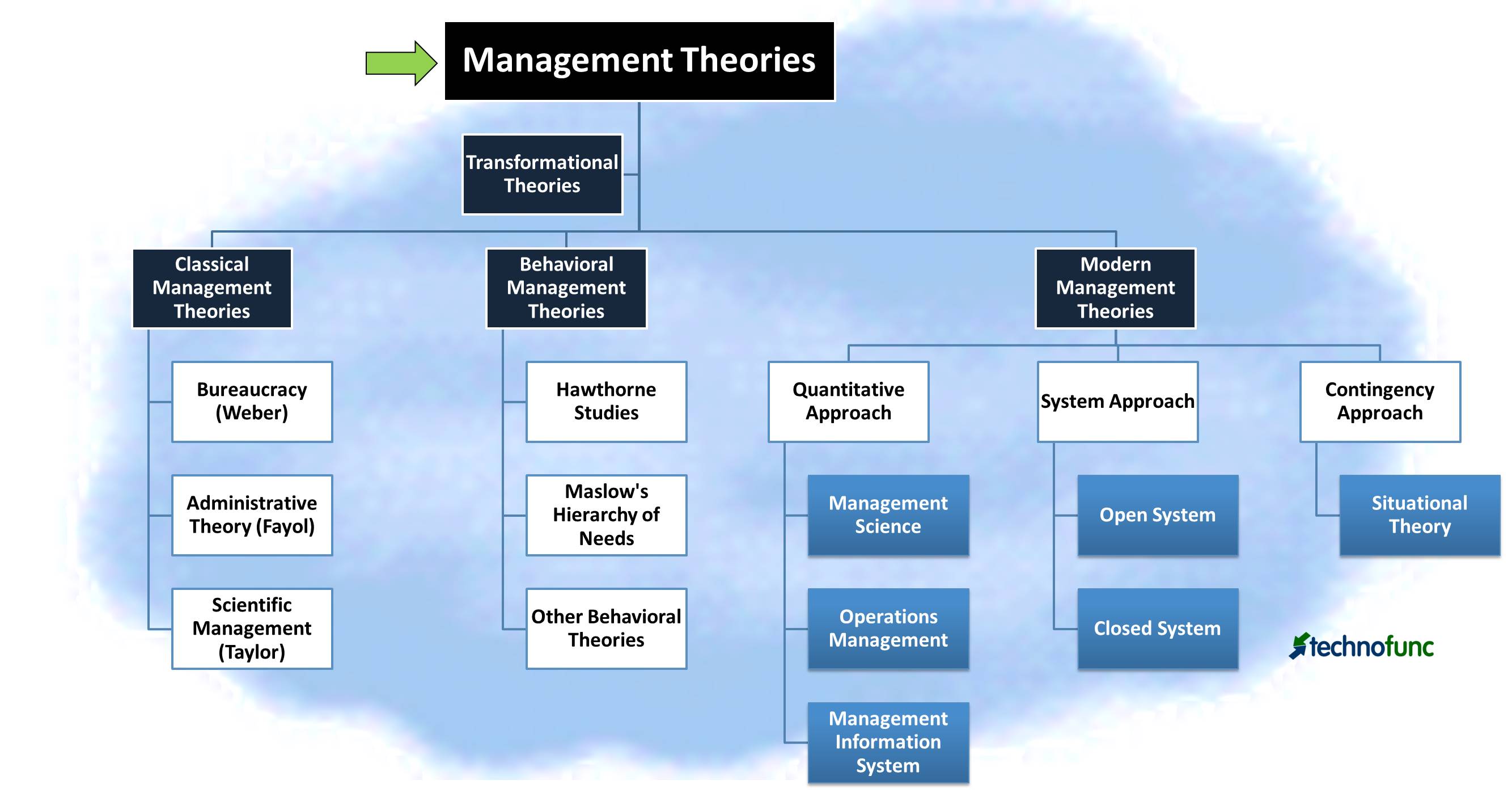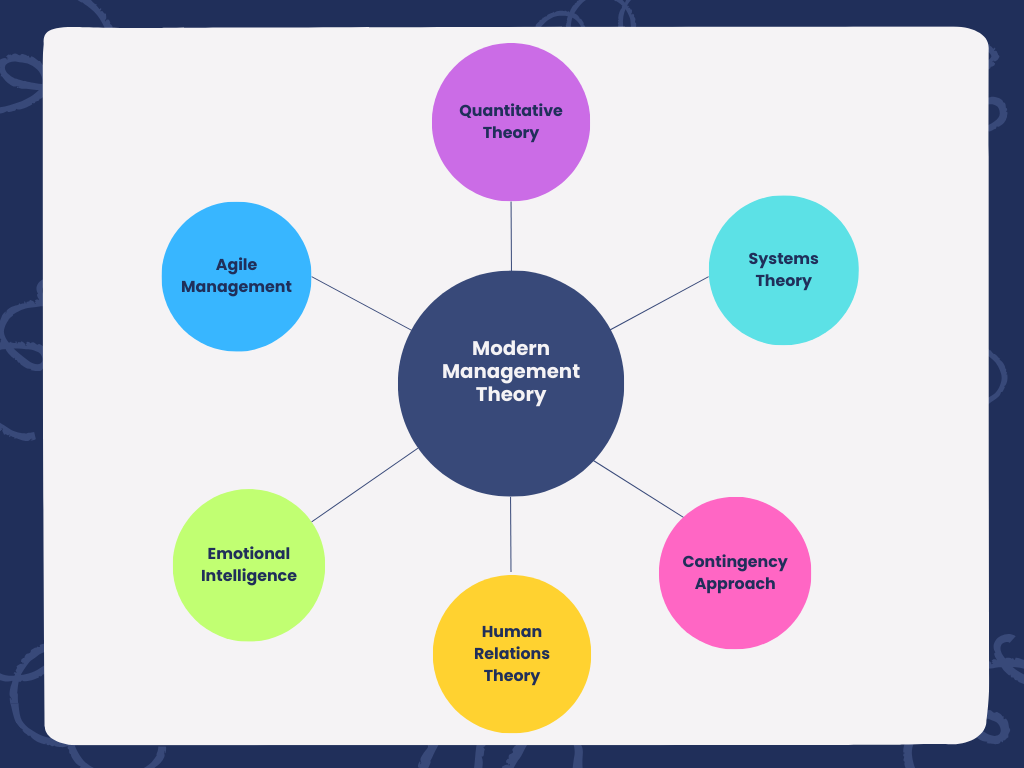
Management theories
Management theories are like the blueprints architects use for buildings – they provide a framework for how to effectively organize and run a business or any group of people. These theories have evolved over time, reflecting the changing needs and complexities of the modern world.
Here are some of the most influential management theories, explained in a way that won’t put you to sleep:
1. Scientific Management (Early 1900s)
Think of this as the “assembly line” approach. This theory, pioneered by Frederick Winslow Taylor, focused on finding the most efficient way to perform tasks.

Example: Imagine you’re making pizzas. Scientific management would involve breaking down the process into steps like: spreading the sauce, adding cheese, arranging toppings, and baking. Each step would be timed, and workers would be incentivized to complete each step as quickly as possible without sacrificing quality.
Pros: Increased productivity, improved efficiency, and standardized work processes.
Cons: Can lead to job dissatisfaction and a lack of employee motivation as it focuses heavily on output and can dehumanize workers.
2. Bureaucracy (Early 1900s)

This theory, developed by Max Weber, emphasizes clear hierarchies, rules, and procedures.
Example: Think of a government agency with strict rules and regulations, where every decision and action must be documented and approved by multiple levels of management.
Pros: Reduces ambiguity, ensures fairness, and promotes consistency.
Cons: Can lead to inflexibility, slow decision-making, and stifle creativity.
3. Human Relations (Mid-1900s)
This theory shifted the focus from purely efficiency to the human element.
Example: Creating a company culture that values employee input, encourages social events, and provides opportunities for professional development.
Pros: Improved employee morale, increased job satisfaction, and stronger teamwork.
Cons: Can be difficult to measure the impact of these factors on productivity and profitability.
4. Systems Theory (Mid-1900s)
This theory views organizations as complex systems with interconnected parts.
Example: A manufacturing company that considers the impact of its production processes on the environment and the needs of its customers.
Pros: Holistic view of the organization, improved adaptability, and better decision-making.
Cons: Can be complex and difficult to implement in practice.
5. Contingency Theory (Late 1900s)
This theory recognizes that there is no one-size-fits-all approach to management.
Example: A company that adjusts its management style based on the needs of its employees, the demands of the market, and the competitive landscape.
Pros: Increased flexibility and adaptability, improved decision-making, and increased effectiveness.
Cons: Can be challenging to identify and analyze all relevant situational factors.
6. Chaos Theory (Late 1900s)
This theory emphasizes the unpredictable and complex nature of organizations.
Example: A company that encourages experimentation, embraces uncertainty, and empowers employees to take risks.
Pros: Increased innovation and creativity, improved adaptability, and greater employee empowerment.
Cons: Can be challenging to maintain control and ensure that all activities are aligned with the overall goals of the organization.
7. Learning Organization (Late 1900s)
This theory, popularized by Peter Senge, focuses on creating an environment where learning is continuous.
Example: A company that invests in employee training and development, encourages knowledge sharing, and fosters a culture of continuous improvement.
Pros: Increased innovation and adaptability, improved employee engagement, and long-term sustainability.
Cons: Requires a significant investment in training and development, and can be challenging to implement in large organizations.
8. Lean Management (Late 1900s)
This theory, originating from the Toyota Production System, focuses on eliminating waste and maximizing efficiency.
Example: A manufacturing company that implements techniques like just-in-time inventory management,